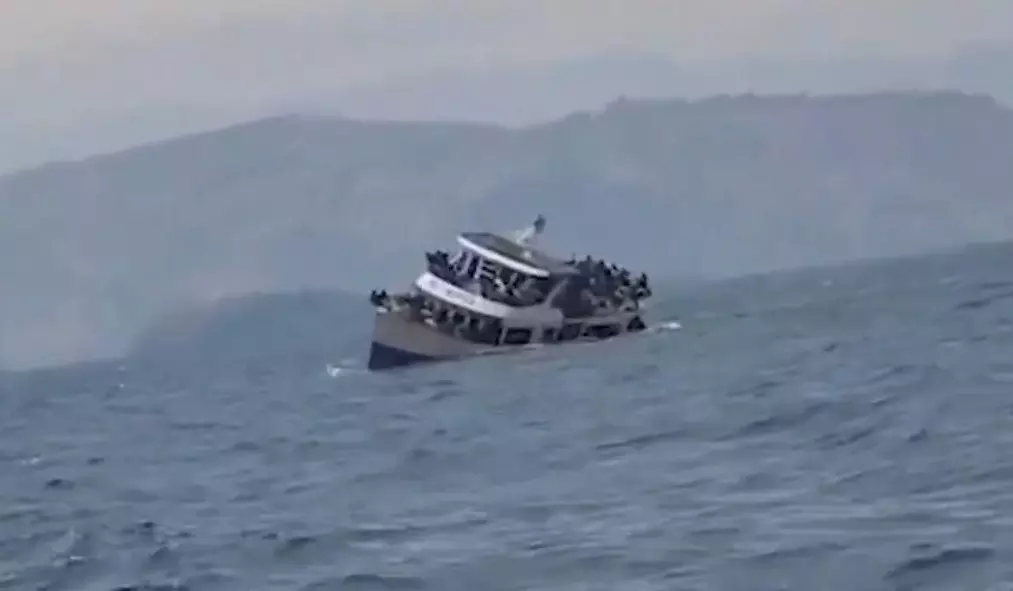Introduction
Goa, known for its picturesque beaches and vibrant tourism, was recently struck by a tragic boat accident that has left the state in mourning. The incident, which occurred on October 4, 2024, resulted in significant loss of life and has raised serious concerns about maritime safety in the region. This article delves into the details of the accident, the immediate response, and the broader implications for safety protocols in Goa’s waters.
The Tragic Incident
On the morning of October 4, 2024, a boat carrying over 100 passengers capsized off the coast of Goa. The boat, which was reportedly overloaded, encountered rough waters and strong currents, leading to the tragic accident. According to eyewitnesses, the vessel began to take on water rapidly, causing panic among the passengers (source).
Rescue operations were launched immediately, with the Indian Coast Guard and local fishermen playing crucial roles in the efforts. Despite their best efforts, the accident resulted in the loss of several lives. As of the latest reports, 23 bodies have been recovered, and 40 people have been rescued, while 64 remain missing (source). The search and rescue operations are ongoing, with authorities working tirelessly to locate the missing individuals.
Response and Rescue Efforts
The response to the boat accident was swift, with multiple agencies coordinating to manage the rescue operations. The Indian Coast Guard deployed several vessels and helicopters to the site, while local fishermen and volunteers also joined the efforts. The quick mobilization of resources was crucial in saving many lives, although the challenging weather conditions hampered the rescue operations.
The survivors were provided with immediate medical attention and counseling to help them cope with the trauma. The local hospitals were on high alert, and arrangements were made to accommodate the influx of patients. The state government announced compensation for the families of the deceased and assured that all necessary support would be provided to the survivors (source).
Authorities have launched an investigation to determine the cause of the accident. Preliminary reports suggest that the boat was overloaded and lacked the necessary safety equipment, such as life jackets and emergency communication devices. The investigation aims to identify any lapses in safety protocols and hold those responsible accountable.
Implications for Maritime Safety
The Goa boat accident has highlighted significant concerns regarding maritime safety in the region. Goa, being a major tourist destination, sees a high volume of maritime traffic, including passenger ferries, fishing boats, and recreational vessels. The incident underscores the need for stringent safety regulations and regular inspections to ensure the safety of passengers and crew.
One of the critical issues that have come to light is the enforcement of load limits on passenger vessels. Overloading not only compromises the stability of the boat but also increases the risk of accidents in adverse weather conditions. Authorities must enforce strict penalties for violations and conduct regular checks to prevent such incidents in the future.
Additionally, the availability and maintenance of safety equipment on boats need to be prioritized. Life jackets, emergency rafts, and communication devices are essential for ensuring the safety of passengers in case of emergencies. Training for boat operators and crew on emergency response procedures is also crucial to enhance their preparedness for handling such situations.
The state government has announced plans to review and strengthen maritime safety regulations in light of the recent accident. This includes stricter licensing requirements for boat operators, regular safety drills, and the establishment of a dedicated maritime safety authority to oversee compliance with safety standards.
Conclusion
The tragic boat accident in Goa has cast a somber shadow over the state’s vibrant tourism landscape. While the immediate focus remains on the rescue operations and providing support to the affected families, it is imperative to address the underlying issues related to maritime safety. The incident serves as a stark reminder of the importance of adhering to safety protocols and ensuring that all necessary measures are in place to prevent such tragedies in the future.
As Goa mourns the loss of lives, the authorities must take decisive action to enhance maritime safety and restore confidence among residents and tourists alike. The lessons learned from this tragedy should pave the way for a safer and more secure maritime environment in Goa.



